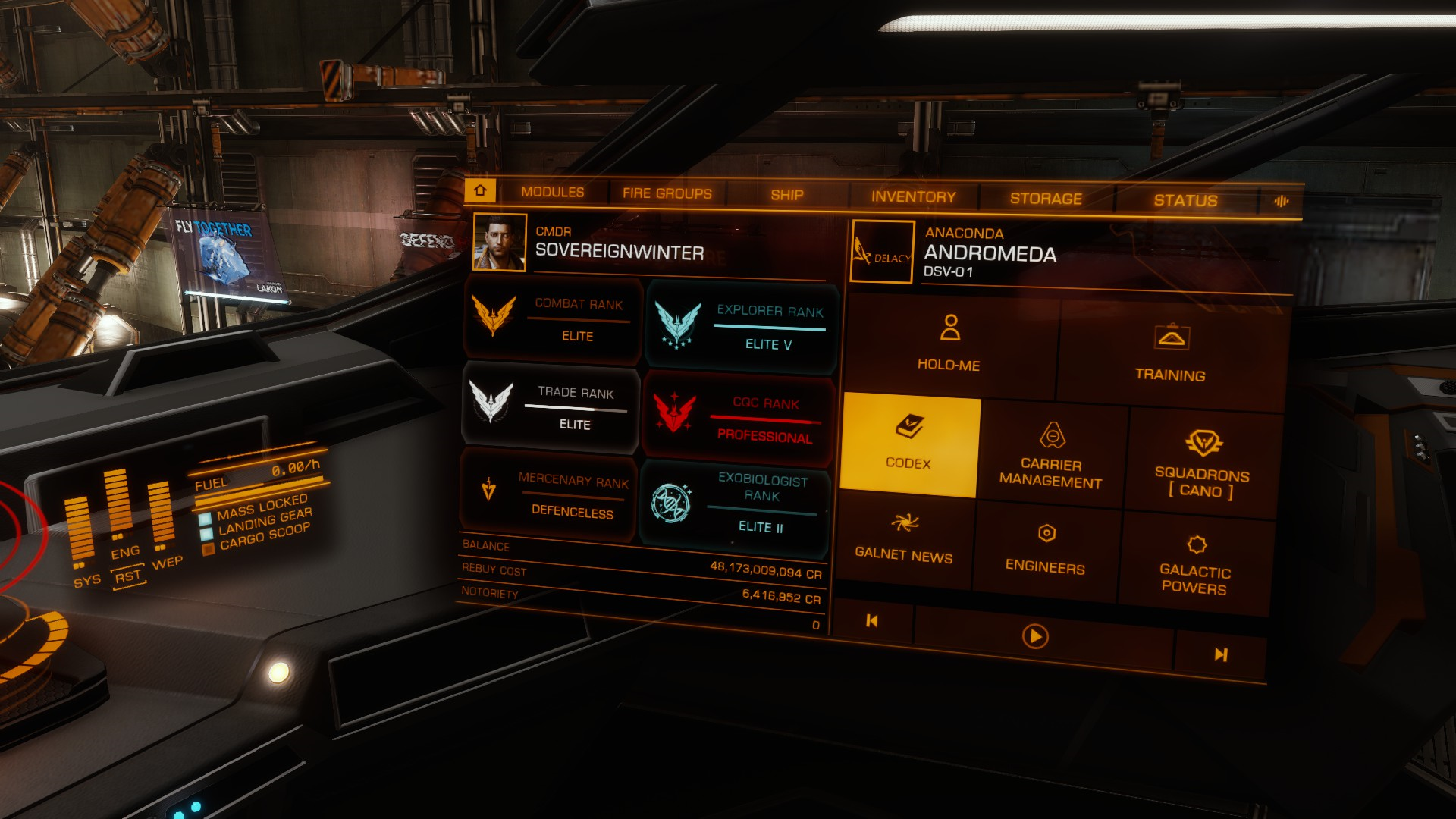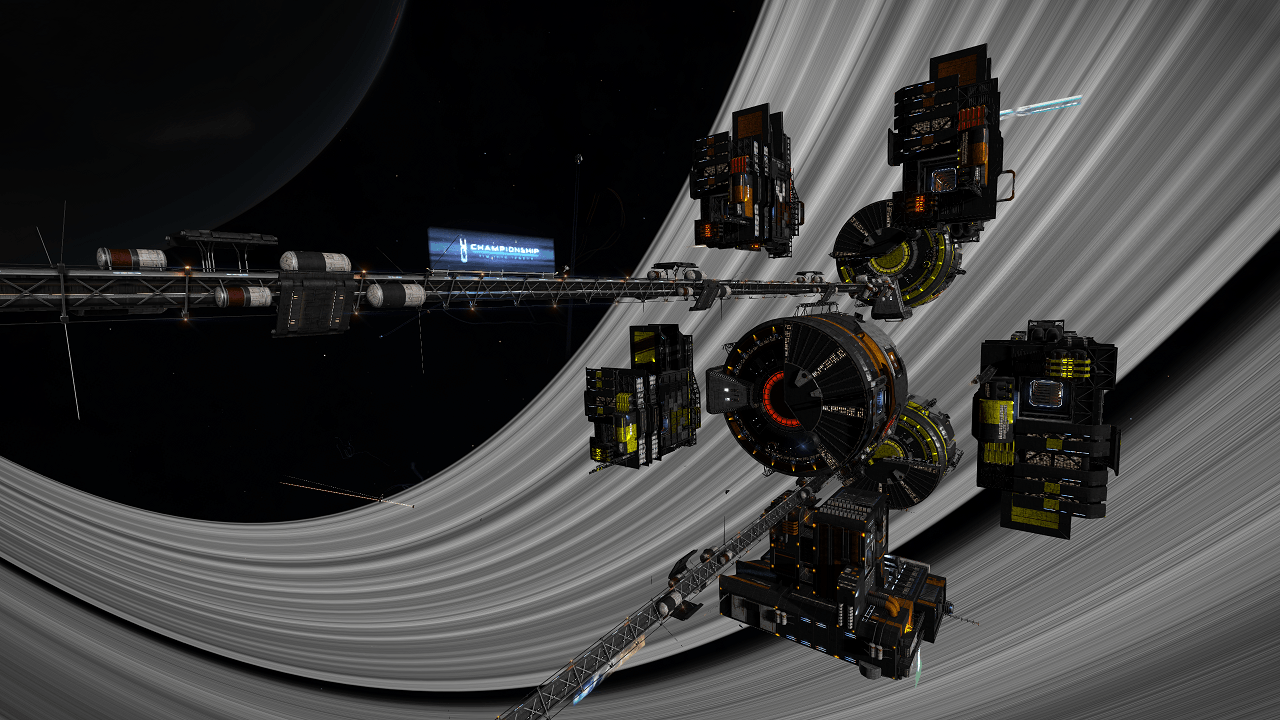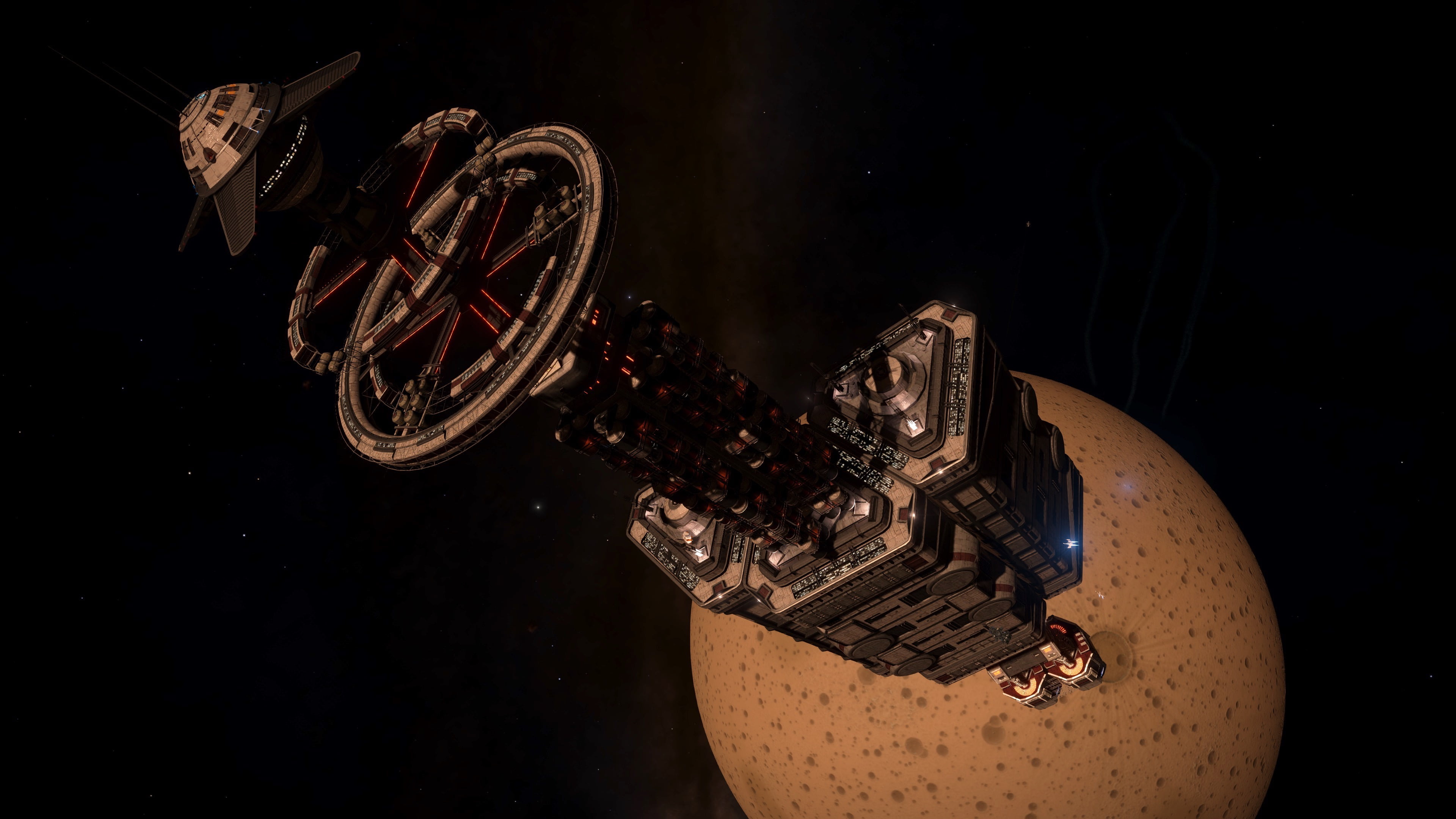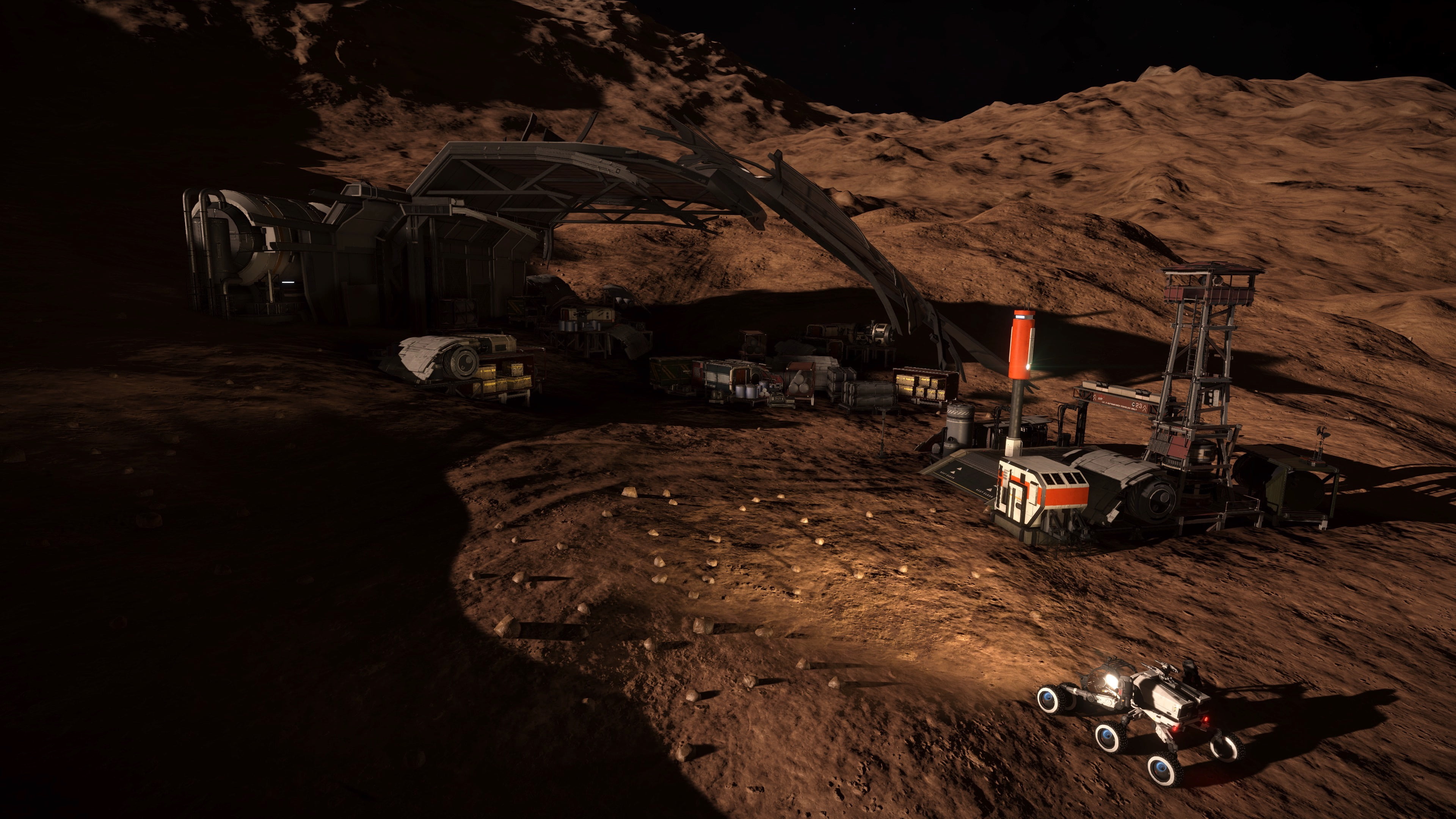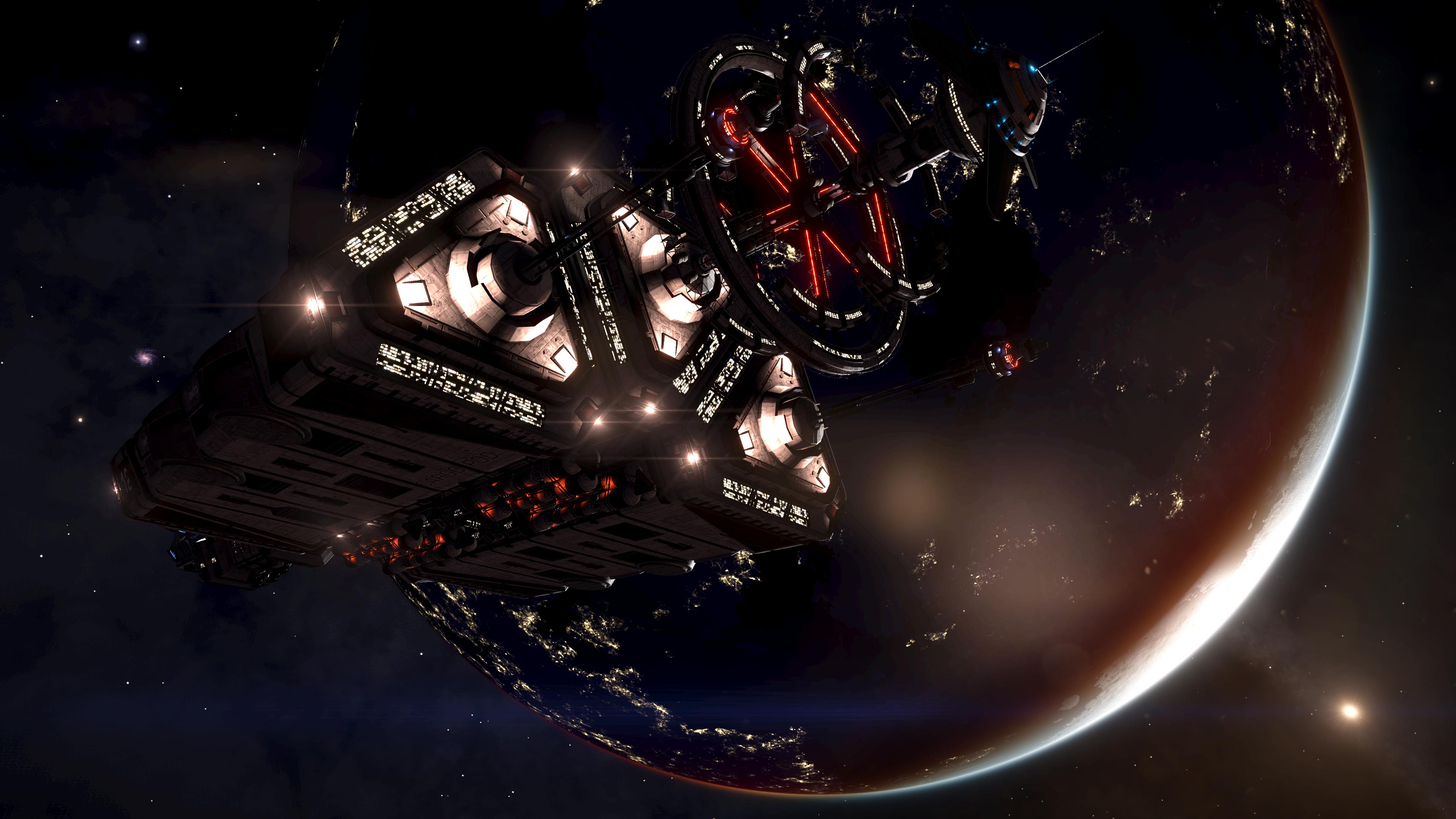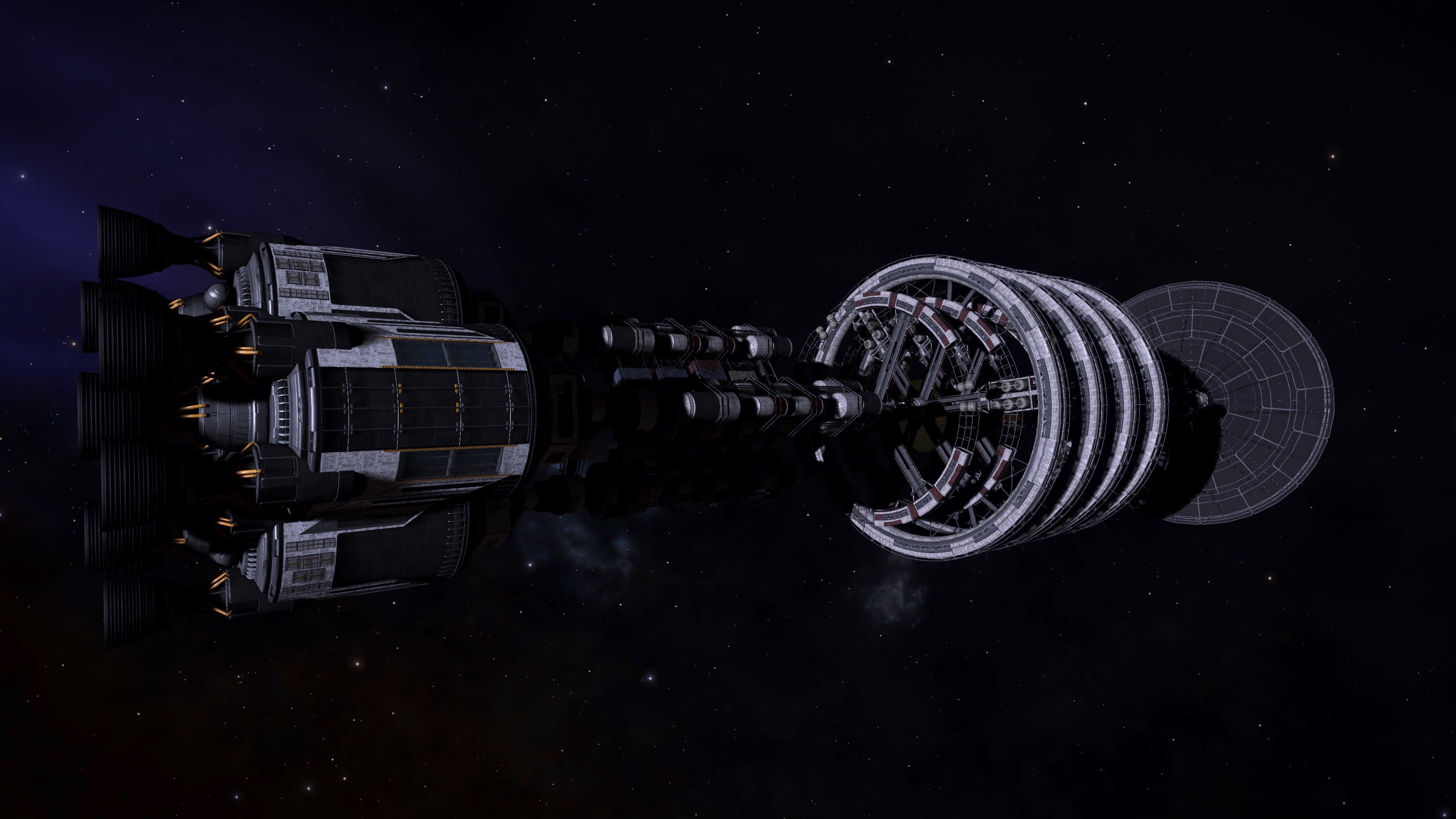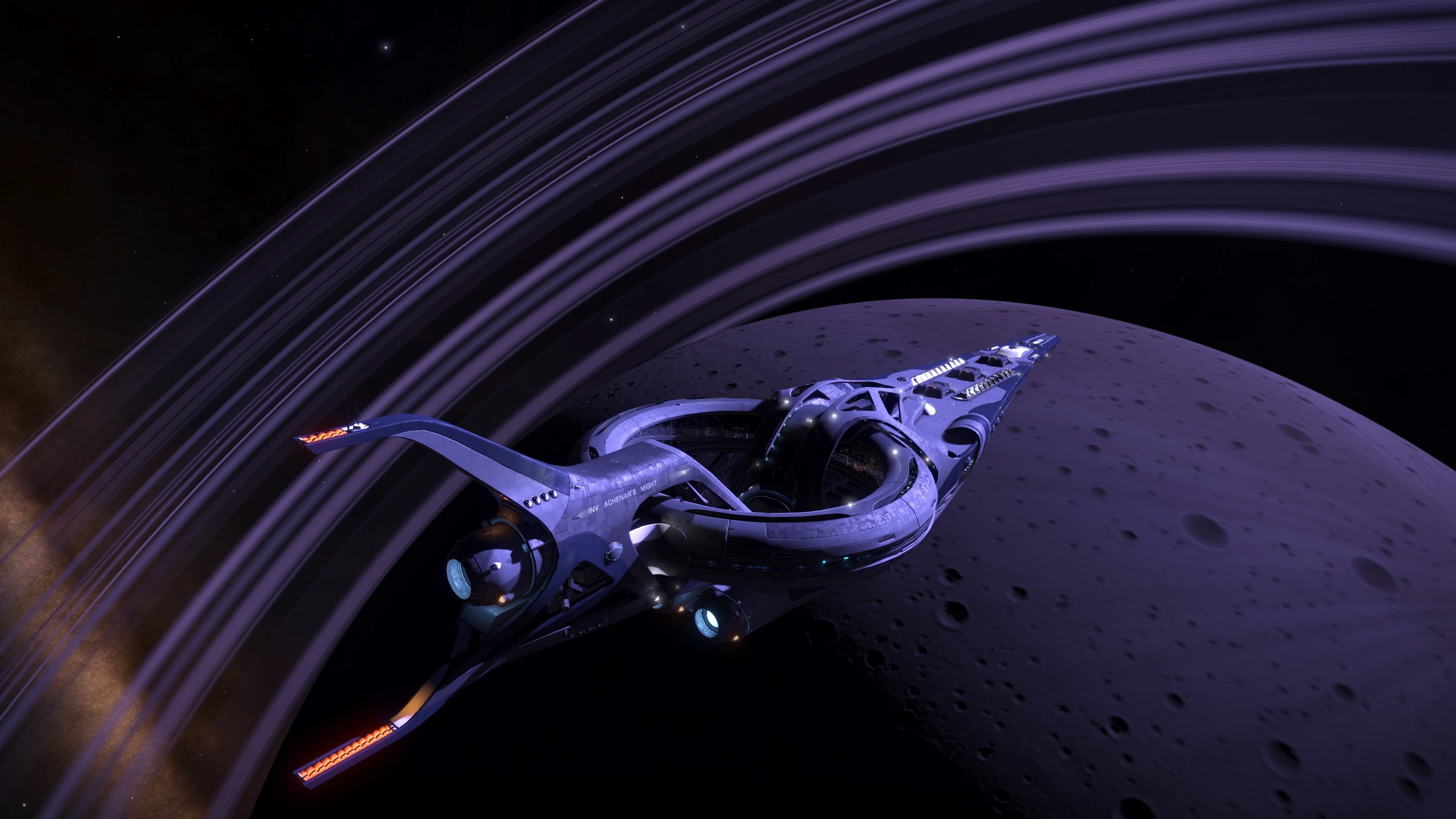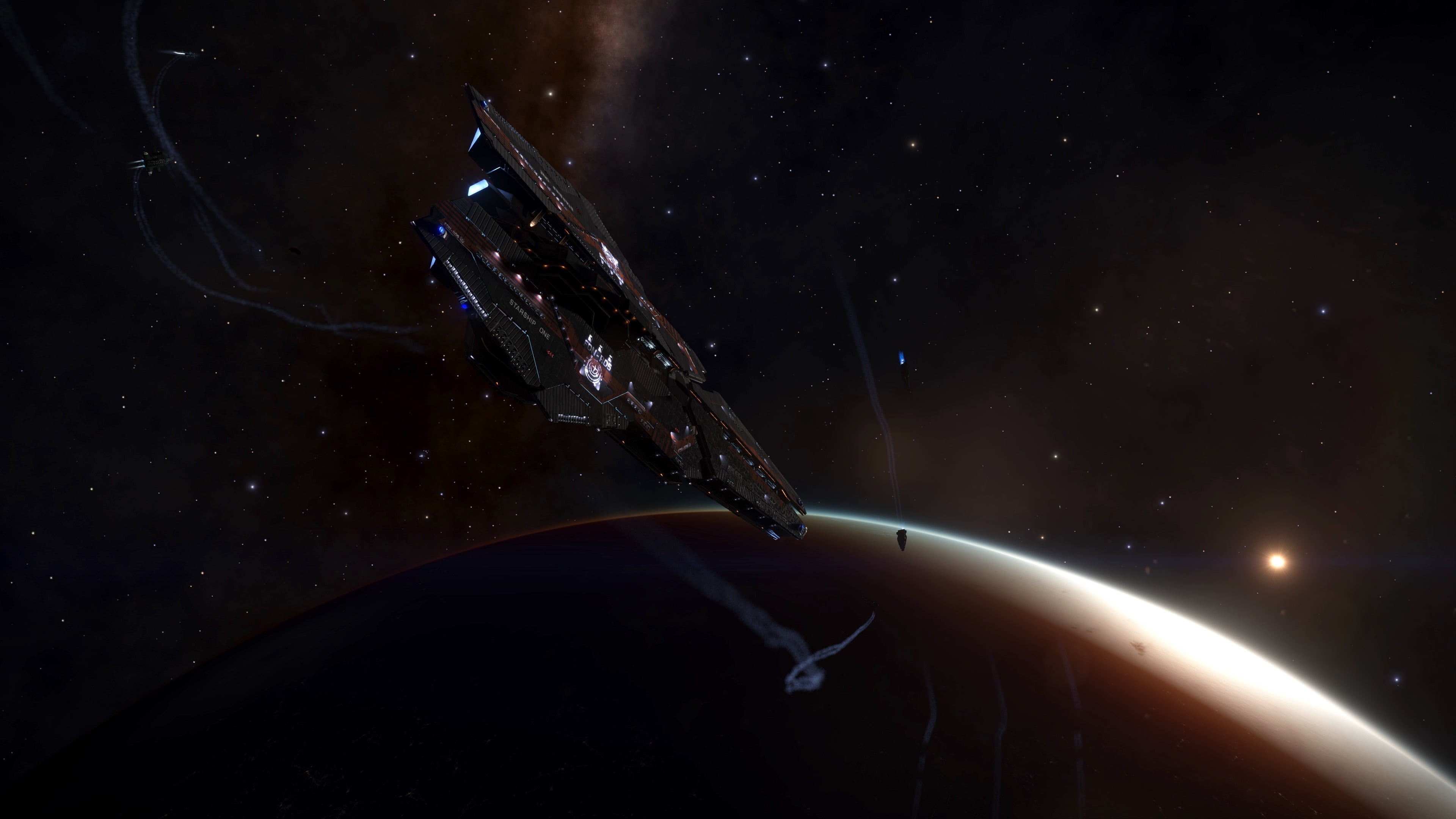The Canonn Organic Scanning Challenge is underway and having made a few attempts its clear that its possible to get good times without too much in the way of preparation. At the time of writing the best time is just under 25 minutes. I’m going to give you a few tips that should help you to win one of the prizes on offer.
Lets consider what a perfect run might look like. Each species has biodiversity range. When you scan a specimen you won’t be able to scan another until you have moved further than that range.
| Species | Range (m) |
| Aleoida | 150 |
| Bacterium | 500 |
| Cactoida | 300 |
| Concha | 150 |
| Frutexa | 150 |
| Fungoida | 300 |
| Osseus | 800 |
| Stratum | 500 |
| Tussock | 200 |
Your perfect run might start with Aleoida. You would travel 300m to get the next two Aleoida and then scan a bacterium at the same location as the last Aleoida and so on. So the total distance covered after scanning all of the species would be 6,100m or 6.1km.
To put this in perspective the best run so far was 43.21 km. So assuming you can locate the right distribution of species it would be possible to significantly reduce the total distance traveled by doing a bit of reconnaissance up front.
Your ideal route should be a straight line to avoid turns that will cost you speed and I would recommend that you look for canyons to help you navigate. Its much easier to plot a pre-planned route if you have some memorable landmarks like canyon walls to guide you.
As you can see below the route that I picked was a bit of a random walk and should be easy to improve on.
Of course finding the species in the right distribution is easier said than done. Some species are more abundant than others. The biggest challenge has been finding Osseus. Most Osseus are a few kilometres from each other. Frutexta shrubs are more abundant but are small, difficult to see and can be mistaken for Tussocks. If you are making a casual attempt at the challenge you would do well to identify your Osseus locations and start with them. Povided you know where to look, all the other species, even Frutexa are not hard to find. If you pick a location with adjacent terrain types then you won’t have to travel very far.
| Species | Range (m) | Terrain |
| Aleoida | 150 | Sandy plains and hillsides |
| Bacterium | 500 | Mostly on the flat ground in sandy areas. |
| Cactoida | 300 | Mainly in the sandy areas but can appear on crevasse floors in the broken rocky ground |
| Concha | 150 | Mainly at the bottom of crevases next to the steep sides |
| Frutexa | 150 | At the top of dark rocky broken ground. |
| Fungoida | 300 | On the flat tops of dark rocky broken ground |
| Osseus | 800 | On rocky outcrops in sandy areas |
| Stratum | 500 | Mainly on flat sandy areas |
| Tussock | 200 | On the flat tops of dark rocky broken ground. |
Planning Your Route
You should record the coordinates of each species and the bearing to head on to get to the next sample. I used a speadsheet with a couple of formulas that are able to calculate bearing and distance but you can also simply record the details by reading them off your hud.
| Min Distance Km | Species | Latitude | Longitude | Bearing | Distance km |
| 0.8 | Osseus Fractus – Turquoise | -22.73721 | 32.86746 | ||
| 0.8 | Osseus Fractus – Turquoise | -22.98813 | 32.70829 | 210 | 5.39 |
| 0.8 | Osseus Fractus – Turquoise | -23.03964 | 32.62777 | 235 | 1.67 |
| 0.15 | Aleoida Coronamus – Teal | -23.03869 | 32.62695 | 322 | 0.02 |
| 0.15 | Aleoida Coronamus – Teal | -23.19796 | 32.63186 | 178 | 2.96 |
| 0.15 | Aleoida Coronamus – Teal | -23.18751 | 32.71719 | 82 | 1.47 |
| 0.3 | Cactoida Cortexum – Yellow | -23.1875 | 32.71725 | 80 | 0.00 |
| 0.3 | Cactoida Cortexum – Yellow | -23.08171 | 32.69777 | 350 | 1.99 |
| 0.3 | Cactoida Cortexum – Yellow | -23.00679 | 32.93829 | 71 | 4.34 |
| 0.5 | Stratum Excutitus – Emerald | -23.0128 | 32.95129 | 117 | 0.25 |
| 0.5 | Stratum Excutitus – Emerald | -23.05994 | 33.064 | 114 | 2.11 |
| 0.5 | Stratum Excutitus – Emerald | -23.09377 | 33.1623 | 111 | 1.79 |
| 0.5 | Bacterium Aurasus – Lime | -23.11331 | 33.19917 | 120 | 0.73 |
| 0.5 | Bacterium Aurasus – Lime | -23.01474 | 33.02295 | 301 | 3.52 |
| 0.5 | Bacterium Aurasus – Lime | -23.0147 | 33.22254 | 90 | 3.41 |
| 0.2 | Tussock Caputus – Yellow | -23.07292 | 33.01957 | 253 | 3.63 |
| 0.2 | Tussock Caputus – Yellow | -23.11502 | 33.01267 | 189 | 0.79 |
| 0.2 | Tussock Caputus – Yellow | -23.15629 | 33.02001 | 171 | 0.78 |
| 0.15 | Frutexa Acus – Green | -23.10738 | 33.01133 | 351 | 0.92 |
| 0.15 | Frutexa Acus – Green | -23.13127 | 33.01559 | 171 | 0.45 |
| 0.15 | Frutexa Acus – Green | -23.15657 | 33.03437 | 146 | 0.57 |
| 0.3 | Fungoida Stabitis – Magenta | -23.12795 | 33.10952 | 68 | 1.39 |
| 0.3 | Fungoida Stabitis – Magenta | -23.19619 | 33.18305 | 135 | 1.78 |
| 0.3 | Fungoida Stabitis – Magenta | -23.15036 | 33.20686 | 26 | 0.94 |
| 0.15 | Concha Renibus – Peach | -23.17107 | 33.15763 | 245 | 0.92 |
| 0.15 | Concha Renibus – Peach | -23.19687 | 33.16342 | 168 | 0.49 |
| 0.15 | Concha Renibus – Peach | -23.23271 | 33.19973 | 137 | 0.91 |
As you can see from the video the route I planned did not have memorable locations and subsequently I got a little lost. So I was not able to get as fast a time as I would have liked, But this will give you an idea of what is possible. None of the times in this attempt are record breaking but at the time of writing this is the fastest anyone has completed a run. I recommend watching it with the sound off.



